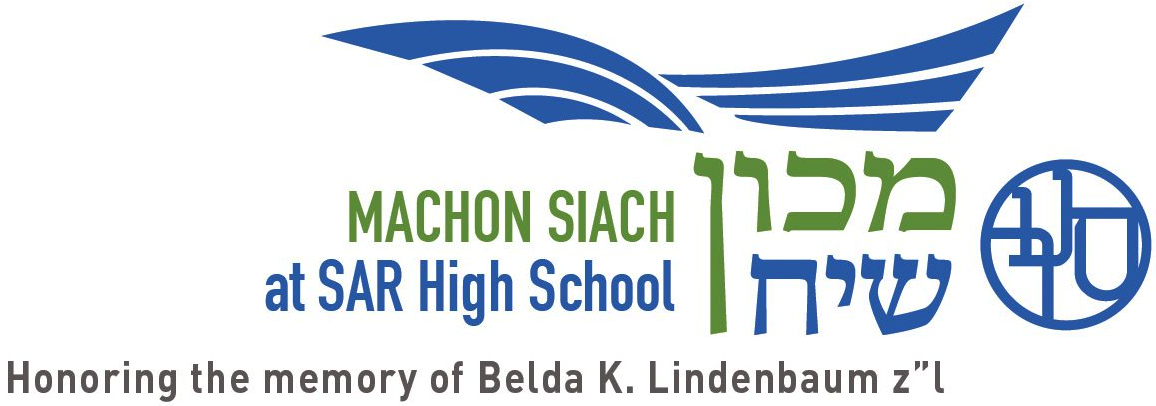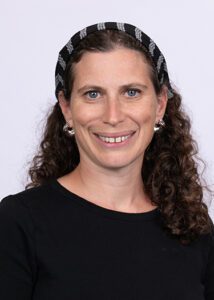When School Comes Home: Navigating New Opportunities in the Age of Corona
Photo: Rawpixel
When we launched Makom B’Siach, I strongly believed that investing in parent learning was a critical step towards deepening and enriching the SAR community. Allocating resources to parents — and inviting them to spend considerable hours together immersed in high level Torah learning and conversation — did not feel like a diversion from the primary goal of SAR, of educating children, but rather an initiative in alignment with that goal.
At its most basic level, adult education at our school can have a trickle down effect to students. Each year, Makom parents report that their children notice them devoting time to reading articles, underlining in their Tanakh, and coming back late from Torah study at SAR. Some children feel inspired by their parents’ enthusiasm, and develop a renewed sense of connection to the Torah they study each day. Parents learn similar topics and texts as their children, and they are able to engage in substantive conversations about content—forming intellectual bridges that can be challenging to create during the teenage years.
On a deeper level, a program like Makom signals to students that Torah learning — in a grand conversation style — does not end with a high school diploma. Being part of a school community that invites learners at all life stages into a rich, layered engagement with our tradition directly communicates to students the value of their own experience at school.
For parents, participating in an adult learning community in parallel to their children offers them personal access to the SAR project. Parents gain an up-close understanding of the kind of discourse we foster at SAR. Families as a whole benefit enormously when multiple members are integrated with the SAR vision in a personal way.
Indeed, part of what drew me to SAR as a teacher was the school’s holistic approach to all its constituents. Students are our primary focus, of course, but SAR encourages teachers to actively participate in the same “work” that we offer our students. I felt this immediately in the realm of religious expression and exploration. When we encourage students to take seriously the opportunity and challenges of crafting a meaningful, rigorous Jewish life, as a faculty, we wrestle with the same issues. We study together, discuss and debate, creating a space among ourselves for diversity of approach, room for tension, and the inspiration to grow.
At SAR, students, teachers and parents are overlapping communities of learners, each informing the other. And yet, the question of resources is a significant one. How much should be channeled towards each group? What are the aspired outcomes of parent learning programs? How might we measure those outcomes?
“As SAR learning filled our bedrooms and living rooms, the school community as a whole began to assume a larger, more central role for many of our families.”
When COVID-19 hit our community and we transitioned to Hive Live, the dividing lines of intersection between our constituencies seemed to blur. School moved into our homes; family space was repurposed to accommodate school learning. Our once separate domains overlapped. It was challenging for all of us — parents, teachers, and students alike — to discern where home ended and school began. The familiar notion that school learning happens outside of the home disappeared, while parents, teachers and students saw each other in new ways and spaces. We may have been separated by myriads of Zoom boxes, but we were drawn into a greater sense of intimacy with one another.
As SAR learning filled our bedrooms and living rooms, the school community as a whole began to assume a larger, more central role for many of our families. Hundreds of households tuned in to weekly Town Hall meetings, relying on the SAR network to keep us updated on the evolving medical scene. From those critical meetings, we learned about vaccine development, mask advice, how to shop safely and to plan for Pesach. We ushered in Shabbat and closed it out together; waving and singing and linking our disparate homes to one another, week after week. When Yom Hashoah, Yom Hazikaron and Yom Ha’atzmaut arrived, many families watched the programming together. Some parents watched it sitting side by side with their kids, discussing it along the way; while others sat in another room, giving their children the space to experience it in their own way.
In those hazy days, I interviewed a number of parents to find out how things were going, and what they were learning about the place of SAR in their family. I wondered with them: have the shifting boundaries between home and school affected our perspective on our children’s education? Do we feel more or less responsible for our kids’ learning now that they are at home? If we have been eavesdropping on our kids’ classes, what have we observed? Are there silver linings in here that we would want to preserve moving forward?
Alas, those March and April days were survival days, as we woke up to tremendous uncertainty each day. None of us were primed yet for reflection, for gleaning the wisdom and carrying it forward. Even as I write this in late July, we are still facing significant uncertainty, though we have settled in more to this reality and are carefully planning for the months ahead.
But some of the parents’ comments struck a deep chord that calls out to be investigated. One mother shared that she felt so included by the programming during those months, she had never realized the potential for a family-centered approach rather than a segmented one in reaching and engaging our various constituencies. Might we shift our programming in the future? How could we do so without denying teens some vital space from their parents? Another parent expressed surprise at the central role SAR had assumed in their family’s life and wondered how and if that might be sustained in a post-COVID world. A third parent shared that when SAR went online, they experienced a sense of profound loss in the social and religious realm. Their kids — and by extension the whole family — gained their social and religious world from the school, and its sudden loss dramatically called attention to that treasure. And I wondered: how many other families felt that way? What are the variety of roles that SAR plays for our member families? How might we plan to allocate our resources in support of those various roles? Should we build a unified vision for our school community?
September is drawing near, and we are gearing up to welcome students back into our classrooms. These questions that have surfaced during COVID beckon to be taken seriously, to be evaluated and to be further developed. If you are interested in joining a parent Siach research group to gather data about our community, dig deep into models for resource allocation, and dream together with us about our communal vision, please reach out to me for more information.



